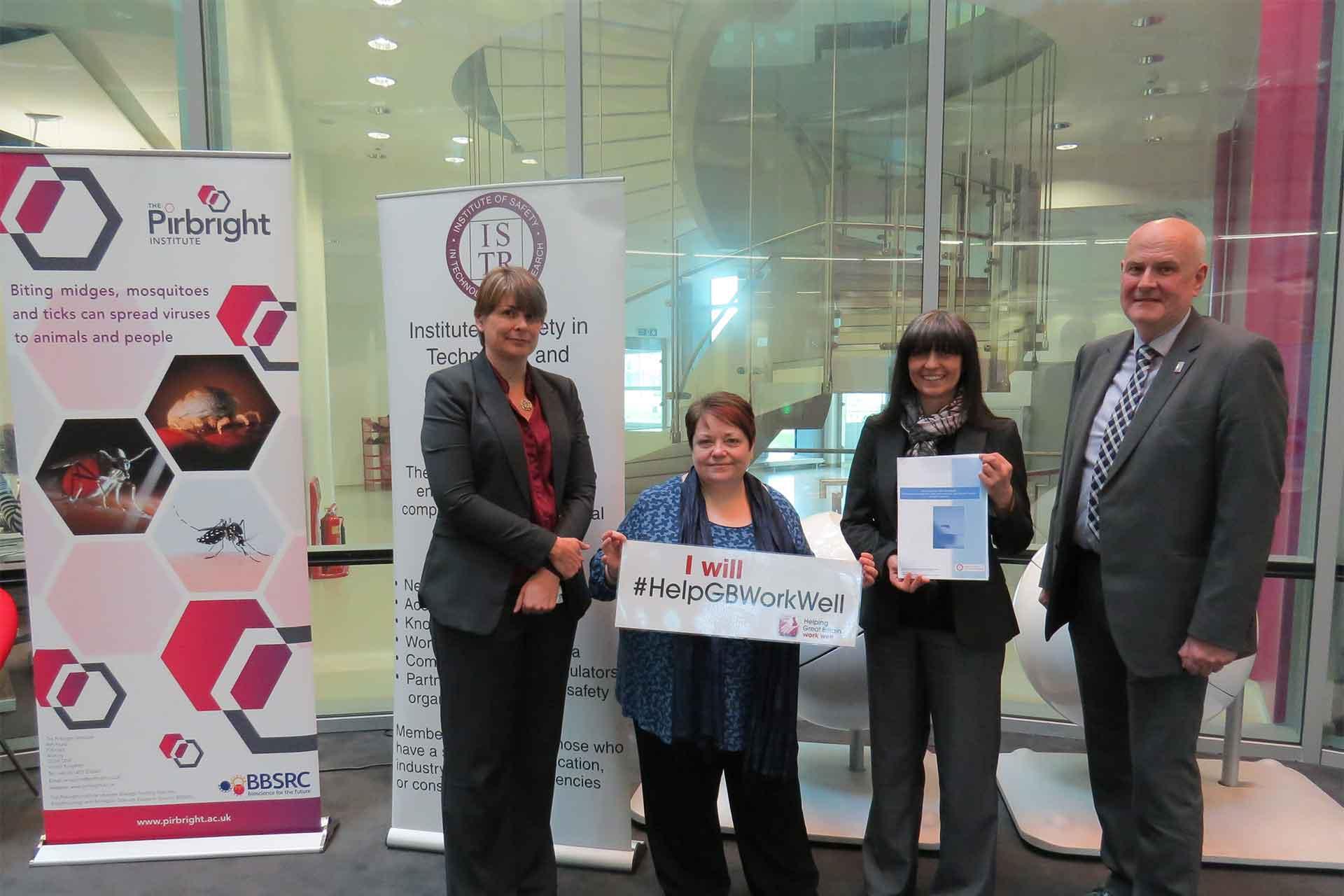The first industry guidance on working safely with arthropods and genetically modified (GM) insects was officially launched today (21 April, 2017) at The Pirbright Institute.
`Safe working with arthropods: Containment and control for work with uninfected, infected and transgenic animals in research`, covers research work with exotic and UK native species of arthropods (mosquitoes, biting midges and ticks) and GM insects that are vectors of virus diseases affecting animals (such as bluetongue virus or African horse sickness virus), and humans (such as Zika virus or dengue fever virus).
It has been produced by the Institute of Safety in Technology and Research (ISTR), in consultation with the Health and Safety Executive (HSE) and the Advisory Committee on Dangerous Pathogens (ACDP) with input from the UK biosafety community and scientists who work with arthropods and GM insects. It also delivers key elements of the HSE’s `Helping GB work well’ strategy for 'Managing risk well' and 'Keeping pace with change'. The guidance will be published on the ISTR website in May 2017, (partners will be advised when it is available).
Previous guidance focussed on the requirements of biosafety legislation regarding work with infected animals, but there was nothing comprehensive or specific available regarding safe working practices with infected arthropods. This new publication advises on minimum requirements and provides best practice for work with arthropods infected with human or animal pathogens including genetically modified (GM) vectors or pathogens.
Sharon Webster, Chair of ISTR’s Biosafety Steering Group and Head of Risk and Assurance and Biological Safety Officer at The Pirbright Institute said: “ISTR is very pleased to launch this guidance today, which is result of a collaborative project begun in 2016 between UK biosafety professionals and research scientists.
“With the UK facing increasing threats from vector-borne diseases, research in this area is crucial and an important area of science at Pirbright. Working with arthropods in high containment presents many challenges however, and we must ensure that our scientists and those working elsewhere are fully informed about the best and safest way to undertake their research to protect themselves and the wider environment”.
Jillian Deans, Deputy Head of Safety and Biological Safety Officer at University College London and author of the publication said: “These practical guidelines address a crucial gap in the current guidance which has been created by a rapidly expanding field of research with infected or genetically modified insects. The aim is to meet the needs of users while ensuring work is managed safely and facilitates the delivery of research of national and international importance”.
